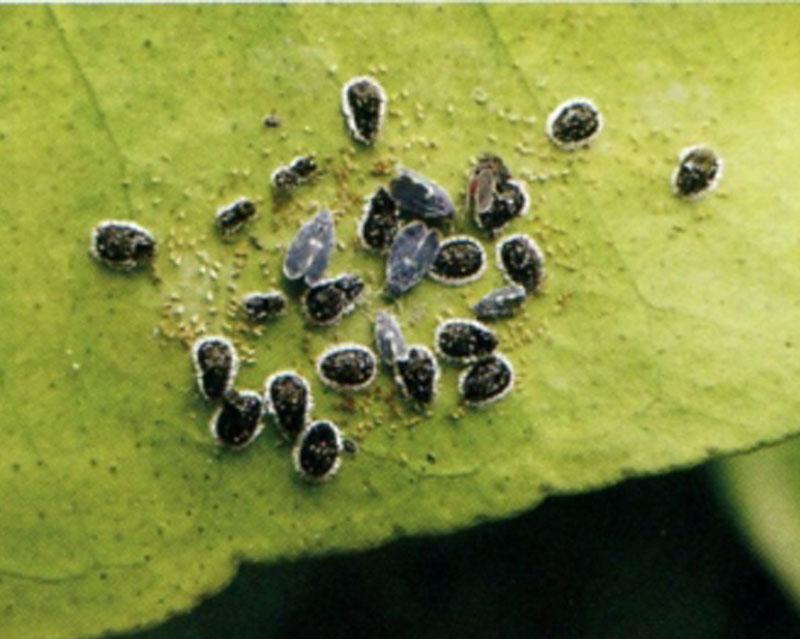
The citrus black bettorius Aleurocanthus spiniferus Quaintance, also known as spiny powder wind, orange spiny powder wind, black pupae with spiny powder wind. It belongs to the order Homoptera, whitefly family. It is the most common occurrence of whiteflies.
【Host】Citrus, lychee, longan, yellow peel, loquat, mango, olive, pear, persimmon, grape and other fruit trees.
[Pest], nymphs cluster on the back of the leaf to suck up sap, causing macular spots. In severe cases, a leaf can reach hundreds of heads, the insect body is stacked, and the secretion of honeydew induces soot disease, resulting in blackening of the branches and leaves, and the ground is like "splashing ink". Seriously affect photosynthesis, weak branches and thin leaves, weak tree potential, less flowering, low yield, poor fruit quality.
【Morphological characteristics】 Adult insect Female body orange-yellow, thin white wax powder, body length 0.88 ~1.36mm, wingspan 2.5 ~3.5 mm; compound eyes red, antennae 7 segments; forewings purple brown, paddle-shaped, with 6 irregular white spots; adult insects when the left and right wings are closed in a roof ridge shape, visible 2 large and small white spots; hindwings are small, no markings, light purple brown; there is a tubular hole on the back of the abdomen. The male is smaller and has a gripper at the end of the abdomen. The eggs are oblong, slightly curved, with a pointed apex, pale yellow at first birth and grayish-black near hatching. Nymphs Hatching nymphs are oval in shape, flattened, pale yellow, and then gradually turn black, shiny, and the old nymphs are pitch black. Pseudopupa oval, pitch-black, shiny, jagged edges, wide white waxy edges around the periphery, significant bulge on the back, 9 pairs of long spines on the thorax, 11 pairs of female pupae on the sides of the body, and 10 pairs of male pupae on the sides of the body.
【Living habits】 Guangdong occurs 5 to 6 generations a year, and the 1-2 instar nymphs of each generation are infancy from April to May, late May to early July, late July to late August, late August to late September, and late September to mid-November. Adults flock to the back of the young leaves of the spring shoots to suck sap and lay eggs. The eggs are laid on the back of the leaves and are scattered or densely arranged in a circular arc. The nymphs crawl not far to start feeding, and then live in a fixed camp. Adults prefer to inhabit new leaves with darker canopy, and are tender (new) in nature, and each generation of adults blooms in line with the new shoot extraction period.
【Prevention and control methods】 (1) Do a good job of pruning the garden, improve ventilation and light transmission, apply fertilizer reasonably, avoid partial nitrogen fertilizer, and create an environment conducive to plant growth and not conducive to the occurrence of black spotted whiteflies. (2) Protection and utilization of natural enemies. Protect natural predators such as whitefly wasps, yellow shield aphids and wasps. (3) In winter, Qingyuan uses 95% motor oil emulsion 150 to 200 times liquid. In the following spring, the 1st to 2nd nymphs are sprayed and controlled during the peak period, and can be selected: 20% thiazinone (chlorpyrifolim) wettable powder 1200 to 1500 times liquid, 48% chlorpyrifos emulsion 1000 times liquid, 25% imidacloprid octylthion emulsion 1000 times liquid, 25% thiazine water dispersible granules 2500 to 3000 times liquid spray.